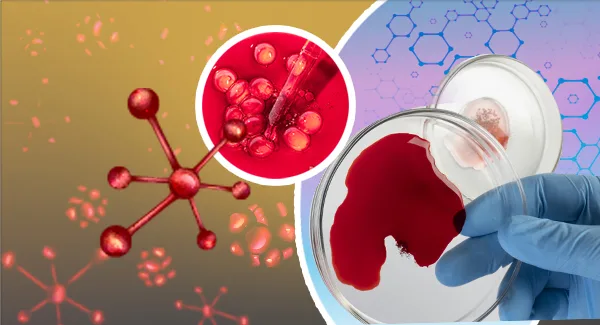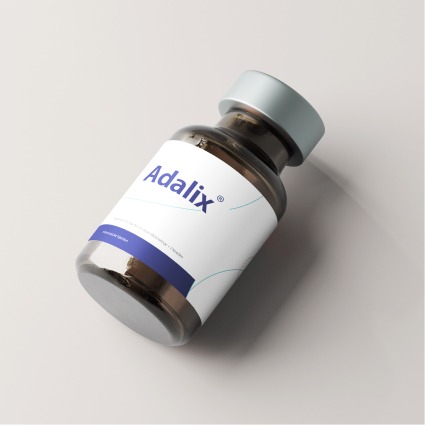Epolix, known by its International Nonproprietary Name (INN) as Erythropoietin Alpha, is a critical therapeutic agent in modern medicine. It addresses a significant medical need: the treatment of anemia associated with chronic kidney disease (CKD), chemotherapy, and HIV. Available in pre-filled syringes (PFS) with dosages of 2000 IU and 4000 IU, Epolix mimics the action of natural erythropoietin, stimulating red blood cell production. This article explores the drug’s mechanism, clinical significance, and broader market dynamics supported by data and statistics as of December 2024.
Mechanism of Action
Erythropoietin Alpha operates by replicating the function of endogenous erythropoietin, a hormone primarily produced by the kidneys. Under normal circumstances, the kidneys secrete erythropoietin in response to hypoxia, signaling the bone marrow to produce more red blood cells. This hormone binds to erythroid progenitor cells, encouraging their survival, proliferation, and differentiation into mature red blood cells. Epolix, with its life-saving potential to stimulate red blood cell production, is not just a treatment but a critical intervention for patients suffering from anemia resulting from various underlying conditions.
Anemia and Its Prevalence
Anemia is not just a local health issue but a global challenge affecting millions. Among the most significant contributors to anemia are chronic kidney disease, cancer-related treatments, and HIV. Let’s delve into the data to understand the global scope of this widespread problem:
- Chronic Kidney Disease (CKD):
– In 2021, an estimated 37 million adults in the United States—approximately 15% of the population—suffered from CKD. Anemia is a common complication, occurring in roughly 50% of advanced CKD patients.
– Anemia in CKD primarily results from reduced erythropoietin production by damaged kidneys, underscoring the vital role of ESAs (erythropoietin-stimulating agents) like Epolix.
- Chemotherapy-Induced Anemia:
– Between 30% and 90% of cancer patients undergoing chemotherapy develop anemia, depending on the type and regimen of treatment.
Erythropoietin Alpha, such as Epolix, significantly reduces the need for blood transfusions in these patients, thereby improving their quality of life and treatment outcomes.
- HIV-Associated Anemia:
– Anemia affects about 30% of individuals living with HIV, stemming from the virus itself, opportunistic infections, or the effects of antiretroviral therapy. Erythropoietin Alpha offers a targeted solution for managing this condition.
Market Dynamics
The erythropoietin drugs market has experienced a remarkable surge, driven by the increasing prevalence of anemia and advancements in biotechnology. In 2023, the global market was valued at approximately USD 10.89 billion. This figure is projected to reach USD 19.25 billion by the end of 2024, reflecting a compound annual growth rate (CAGR) of 11.4%. By 2028, the market is expected to grow to USD 30.92 billion, with a CAGR of 12.6%.
Regionally, North America dominates the market, accounting for a significant share due to the high prevalence of CKD and cancer. In 2024, the North American erythropoietin drugs market was valued at USD 3.78 billion and is expected to grow to USD 5.98 billion by 2029. The Asia-Pacific region is also emerging as a significant market, fueled by increasing healthcare expenditures and better access to medical treatments.
The GCC Market for Epolix
The Gulf Cooperation Council (GCC) region presents a unique opportunity for the growth of erythropoietin drugs like Epolix. Due to lifestyle factors and increasing life expectancy, the prevalence of CKD, diabetes, and other chronic diseases is high in this region.
– CKD in the GCC: Recent studies show that some stages of CKD affect approximately 20% of the adult population in GCC countries. This figure underscores the demand for effective anemia treatments.
Healthcare Investments: With GCC countries heavily investing in healthcare infrastructure, access to advanced therapeutics like Epolix has improved. For example, the UAE’s healthcare spending reached $16 billion in 2024, with a significant portion allocated to specialized treatments.
The GCC market also benefits from favorable regulatory environments that encourage the adoption of biosimilars, ensuring that cost-effective options are available to patients.
Product Composition and Formulation
Epolix stands out not only for its efficacy but also for its carefully designed formulation. The drug is manufactured using recombinant DNA technology, ensuring high purity and biological activity. Each pre-filled syringe contains either 2000 IU or 4000 IU of Erythropoietin Alpha and stabilizers and excipients that maintain its stability during storage and transport.
The pre-filled syringe format offers several advantages:
– Ease of Use: Simplifies administration, reducing preparation time for healthcare providers.
– Precision: Ensures accurate dosing, minimizing the risk of under- or overdosing.
– Patient Comfort: Designed for subcutaneous or intravenous injection, tailored to patient needs.
Comparative Analysis
Compared to other erythropoietin drugs, Epolix stands out with its superior bioavailability and cost-effectiveness. Its pricing structure makes it accessible to more patients, particularly in emerging markets. Furthermore, clinical trials have demonstrated its efficacy to be on par with more established brands like Epogen and Procrit, solidifying its position in the market.
Biosimilars and Market Impact
The rise of biosimilars has been a game-changer in the erythropoietin market, making treatments more affordable and accessible. Epolix, as a biosimilar, has gained significant traction in developed and developing countries. Regulatory approvals in key markets like the EU and GCC have accelerated adoption. By 2024, biosimilars accounted for 35% of the global erythropoietin market, a figure that is projected to rise to 50% by 2026, indicating a significant shift in the market dynamics.
Challenges and Considerations
While Epolix and other erythropoietin therapies offer substantial benefits, several challenges remain. Resistance to erythropoietin therapy is a concern in some patients, requiring higher doses or alternative treatments. Side effects such as hypertension and thromboembolic events also necessitate careful monitoring.
Another challenge is the cost of treatment, particularly in low-income regions. Although biosimilars like Epolix have reduced costs, further efforts are needed to make these therapies universally accessible.
Future Directions
The future of anemia treatment, including Epolix, is promising, with continued innovation and accessibility at the forefront. Ongoing research aims to develop next-generation formulations with improved efficacy and safety profiles. These innovations could include longer-acting versions of Epolix or formulations with reduced side effects. Additionally, advancements in personalized medicine could pave the way for tailored anemia treatments based on individual patient needs, further enhancing the potential of Epolix and similar therapies.
In the GCC, ongoing healthcare reforms and investments will likely enhance the availability and adoption of erythropoietin therapies. Pharmaceutical companies can penetrate this high-potential market through strategic partnerships and awareness campaigns.
Conclusion
Epolix, with its robust formulation and proven efficacy, represents a cornerstone in managing anemia. Its role in addressing the global burden of CKD, chemotherapy-induced anemia, and HIV-associated anemia is indispensable. As the worldwide market continues to expand, fueled by advancements in biotechnology and increasing healthcare investments, Epolix is poised to remain at the forefront of anemia treatment. Epolix can continue transforming patients’ lives worldwide by overcoming challenges and leveraging new opportunities.
Learn about cutting-edge biosimilar therapies at Opal Bio Pharma’s official website.

